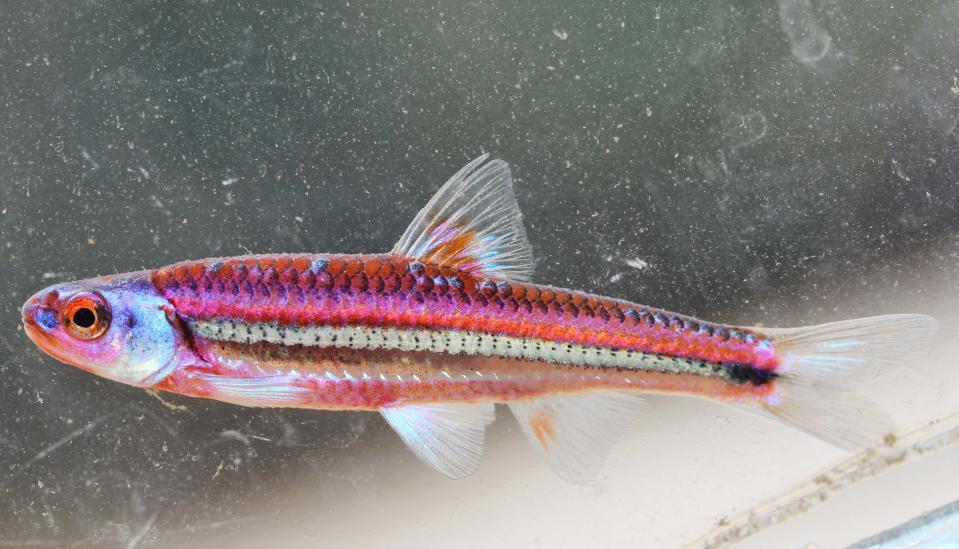Southern rivers provide havens of biodiversity | ECOVIEWS
R. Scot Duncan has done it again, revealing the impressive biodiversity and extolling the ecological virtues of Alabama and the entire Southeast.
In “Southern Rivers: Restoring America’s Freshwater Biodiversity” (University of Alabama Press, 2024), Duncan focuses on the environmental peril faced by thousands of animals that depend on their homes in flowing waters for survival.
More: Festivals honor raccoons, frogs, banana slugs and more | ECOVIEWS
He shows how unharnessed commercial development of the regions through which rivers run has affected wildlife in myriad negative ways.
He offers another equally important message: clean rivers provide essential resources to humans in the region. When we destroy a river, we also destroy our culture, our livelihoods, ourselves. The book makes it clear that the time has come for wise management and conservation of one of our most critical natural resources.

The book’s premise is that humans have drastically altered the natural world in many ways, seldom in the best interests of wildlife and natural habitats.
Duncan poses three questions we must answer to “understand the southeastern river crisis” and “to manage our rivers more wisely.” The first is “how did we get here?” Part of the answer lies in trying to understand why we let industries, urban centers and large-scale agriculture pollute our streams and rivers in the first place. Addressing why stringent environmental regulations have not been implemented and enforced will lead to an understanding of why our rivers remain closer to the polluted end of the spectrum than to the pristine.
I have a solution that I’ve offered many times before: We should require the people who profit from an industry to live downstream from their operations.

The second question the author asks is applicable to many regions around the world: Will people in the Southeast have enough water in the face of regional droughts that some scientists predict will occur because of climate change? Enough water means not only for drinking and household use but also for hydroelectric power, farming and other purposes we take for granted.
The third question is whether the awesome biodiversity dependent on Southern rivers will be able to survive. He addresses this last question with relevant examples throughout the book.
The 60 chapters are as eclectic as natural ecosystems themselves. Some are informative accounts of the ecology of selected river species and how they are faring.
“American Eel, Superhero” is an intriguing account of the biology of these long, slippery fish. American eels breed in the Sargasso Sea, and the tiny young, called elvers, swim up to 10,000 miles through the Atlantic Ocean and upstream in a river, where they can live for decades. The chapter reveals the negative impacts river dams and commercial overfishing have had on them.
Equally informative chapters on sturgeon, mussels and other river inhabitants emphasize how critical healthy habitats are to their survival and what we must do to help.
Scot Duncan is to be admired for not holding back on his position on controversial environmental topics, including global climate change (“Earth’s climate is changing rapidly, and we are to blame”), damming rivers (“dams create more problems than they solve”) and impending drought (“faced with declining water supplies … the Southeast must find new sources of water this century”).
Furthermore, he presents the evidence to support his points with suggested solutions that people in the region should embrace.
“Southern Rivers” joins the list of popular yet scholarly books that help readers appreciate the Southeast’s impressive assemblage of biodiversity and natural communities.
Of course, every state has distinctive plants, animals and habitats that set it apart from others. But the Southeast is one of the country’s most diverse regions for a variety of taxonomic groups, in great part because of its streams and rivers.
Books such as this, which focus on these natural wonders and the problems they face, help raise awareness, as well as outlining steps we must take to ensure these treasures remain with us.
Whit Gibbons is professor of zoology and senior biologist at the University of Georgia’s Savannah River Ecology Laboratory. If you have an environmental question or comment, email ecoviews@gmail.com.
This article originally appeared on The Tuscaloosa News: Book makes case for wise management of Southern rivers | ECOVIEWS

